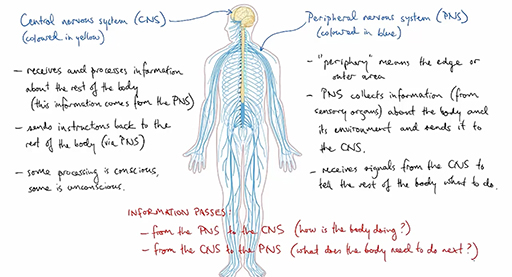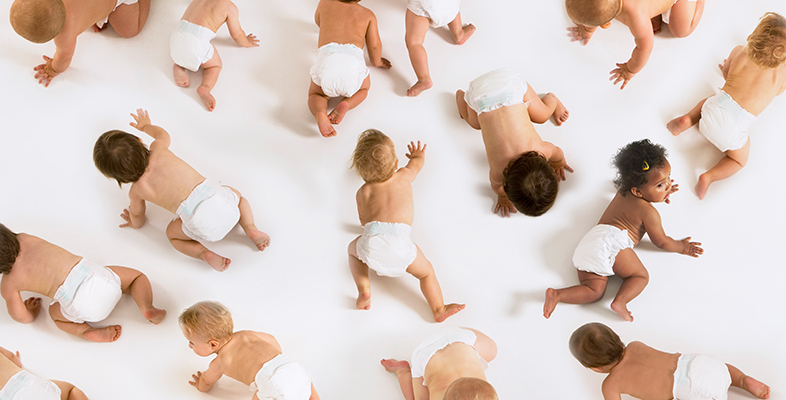1.4 Nervous system
Watch Video 1 which introduces the overall structure of the nervous system and how it is made up of the brain, the spinal cord, and a complex network of nerves that run throughout the whole body.

Transcript: Video 1
The nervous system consists of two main parts, the central nervous system (CNS) and the peripheral nervous system (PNS). The CNS is made up of the brain and spinal cord. The PNS is made up mainly of nerves, which are bundles of long fibres called neurons, that connect the CNS to every part of the body.
This system allows different parts of the body to communicate and enables the brain to control and regulate what is going on. Through the nervous system, the brain detects environmental changes that impact the body, then works in tandem with other body systems to respond and maintain equilibrium.
For example, if it is hot, the brain tells the blood vessels to dilate (become wider) to reduce body temperature, if it is cold, the brain sends shiver signals out to warm the body up.
